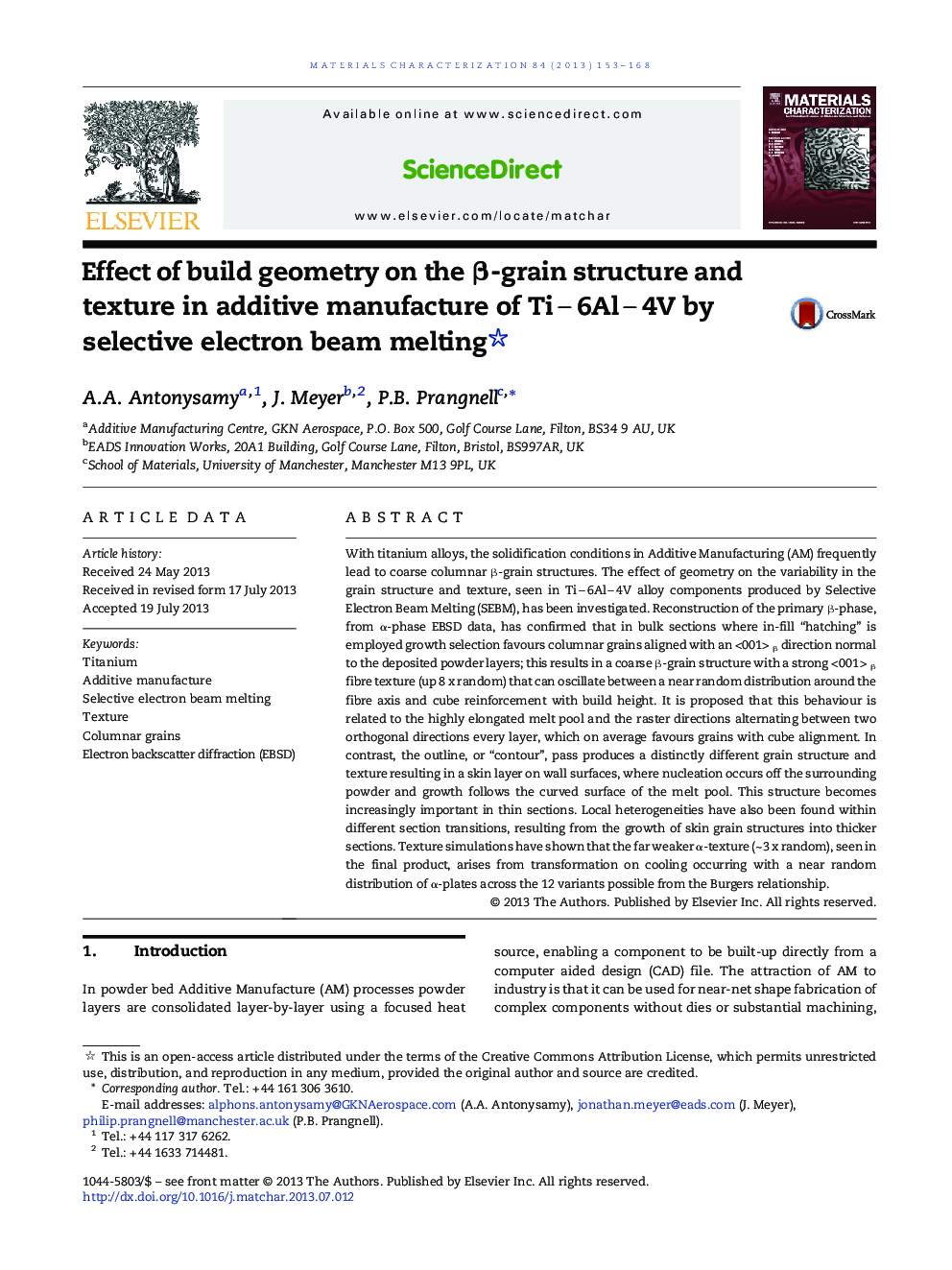| کد مقاله | کد نشریه | سال انتشار | مقاله انگلیسی | نسخه تمام متن |
|---|---|---|---|---|
| 7971089 | 1514403 | 2013 | 16 صفحه PDF | دانلود رایگان |
عنوان انگلیسی مقاله ISI
Effect of build geometry on the β-grain structure and texture in additive manufacture of Ti6Al4V by selective electron beam melting
دانلود مقاله + سفارش ترجمه
دانلود مقاله ISI انگلیسی
رایگان برای ایرانیان
کلمات کلیدی
موضوعات مرتبط
مهندسی و علوم پایه
مهندسی مواد
دانش مواد (عمومی)
پیش نمایش صفحه اول مقاله

چکیده انگلیسی
With titanium alloys, the solidification conditions in Additive Manufacturing (AM) frequently lead to coarse columnar β-grain structures. The effect of geometry on the variability in the grain structure and texture, seen in Ti6Al4V alloy components produced by Selective Electron Beam Melting (SEBM), has been investigated. Reconstruction of the primary β-phase, from α-phase EBSD data, has confirmed that in bulk sections where in-fill “hatching” is employed growth selection favours columnar grains aligned with an <001> β direction normal to the deposited powder layers; this results in a coarse β-grain structure with a strong < 001 > β fibre texture (up 8 x random) that can oscillate between a near random distribution around the fibre axis and cube reinforcement with build height. It is proposed that this behaviour is related to the highly elongated melt pool and the raster directions alternating between two orthogonal directions every layer, which on average favours grains with cube alignment. In contrast, the outline, or “contour”, pass produces a distinctly different grain structure and texture resulting in a skin layer on wall surfaces, where nucleation occurs off the surrounding powder and growth follows the curved surface of the melt pool. This structure becomes increasingly important in thin sections. Local heterogeneities have also been found within different section transitions, resulting from the growth of skin grain structures into thicker sections. Texture simulations have shown that the far weaker α-texture (~ 3 x random), seen in the final product, arises from transformation on cooling occurring with a near random distribution of α-plates across the 12 variants possible from the Burgers relationship.
ناشر
Database: Elsevier - ScienceDirect (ساینس دایرکت)
Journal: Materials Characterization - Volume 84, October 2013, Pages 153-168
Journal: Materials Characterization - Volume 84, October 2013, Pages 153-168
نویسندگان
A.A. Antonysamy, J. Meyer, P.B. Prangnell,